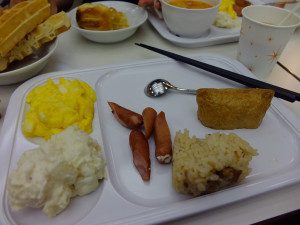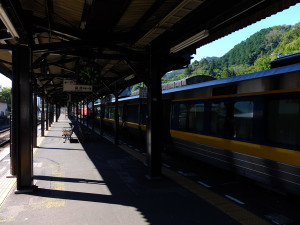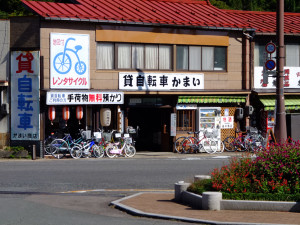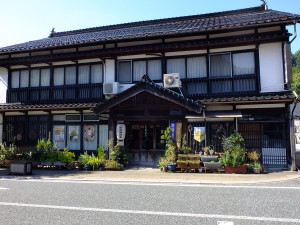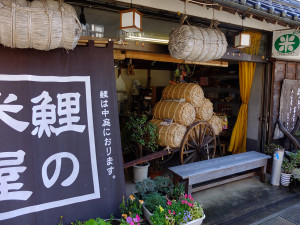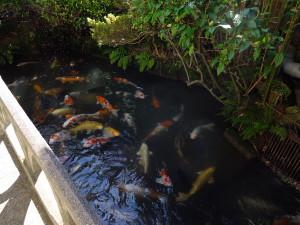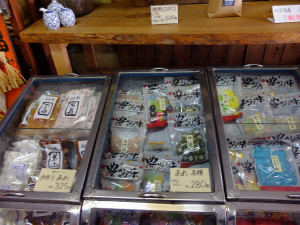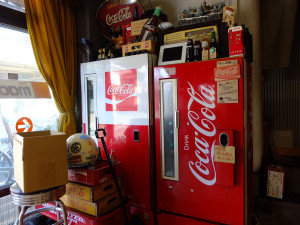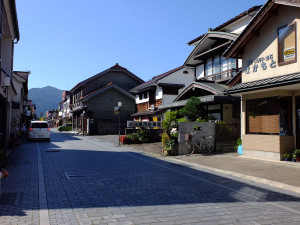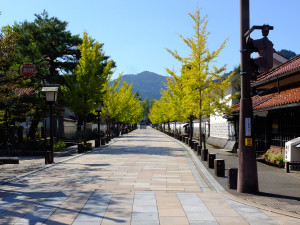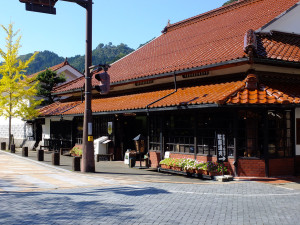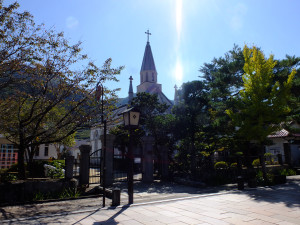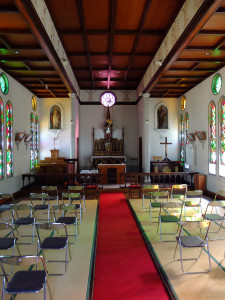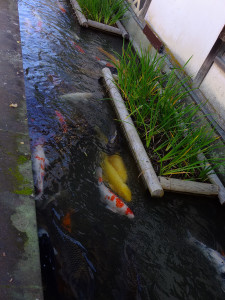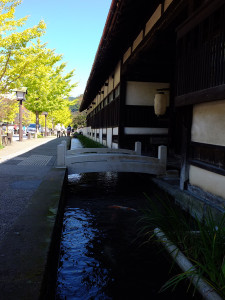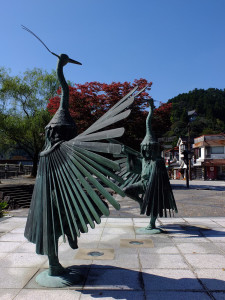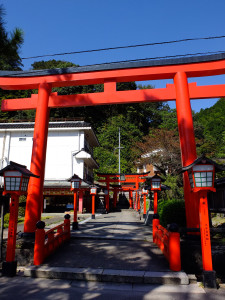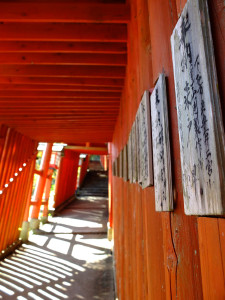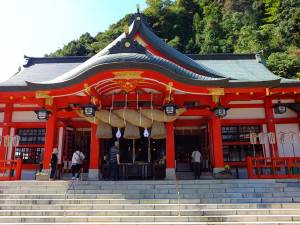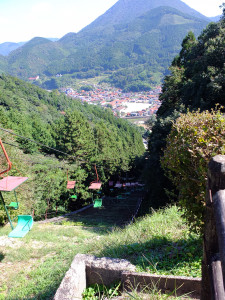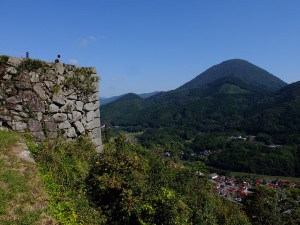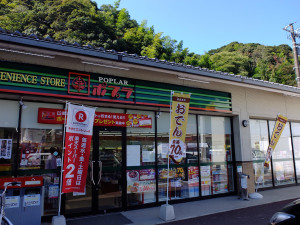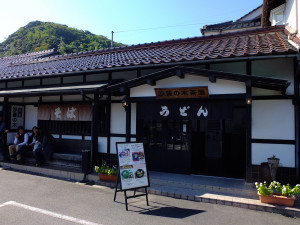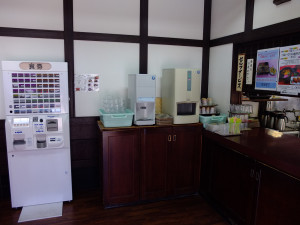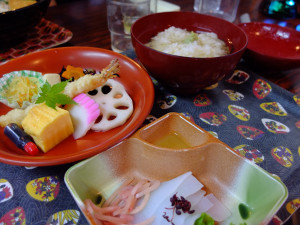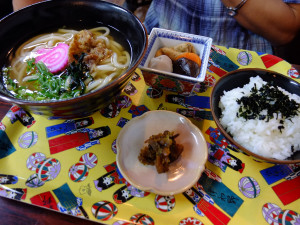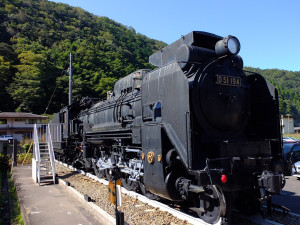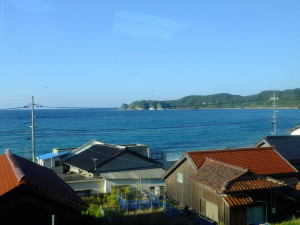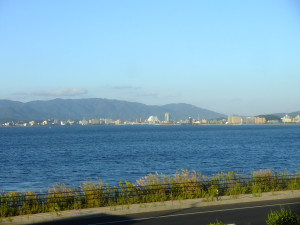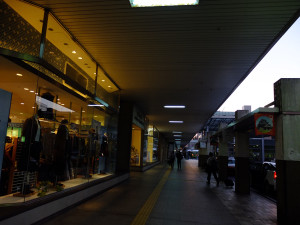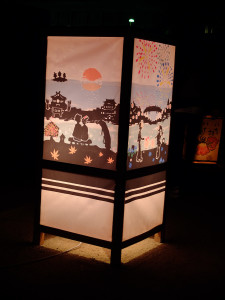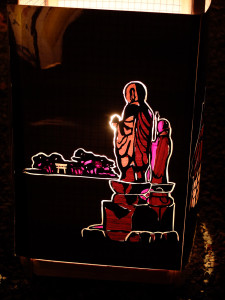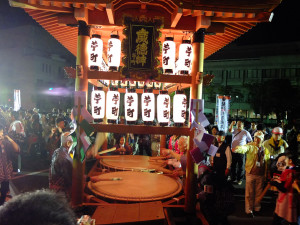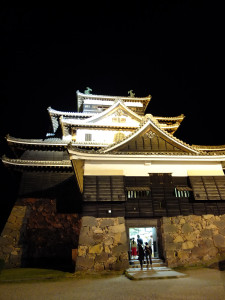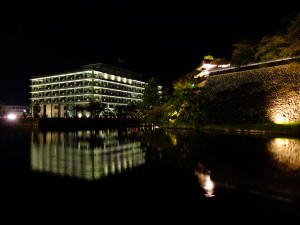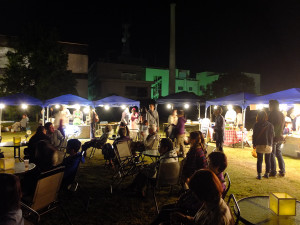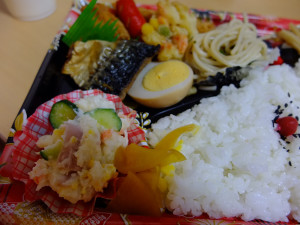Breakfast at 6:30. Comfort Hotel’s breakfast is in line with most business hotels, some salad, egg, sausage, bread, soup and hot beverages. Items that can be easily prepared without proper kitchens or chefs. They don’t taste terrible, just monotonous and plain.
The day’s schedule involves Tsuwano then onward to Matsue, maybe see the sunset depending on the timing and then the suitouro lantern festival and drum parade pre-event.
I booked the 7:48 shinkansen to Shin-Yamaguchi. There was another one at 7:53 but being cautious, I picked the earlier one just in case. Which is just as well I did, because I spent a little more time packing up after breakfast, we ended up just missing the originally intended train. Had I picked the later one the whole day’s schedule would have been doomed as we would not reach Shin-Yamaguchi in time to make the transfer to Tsuwano.
It’s only half an hour to Shin-Yamaguchi. Shin-Yamaguchi station isn’t too big, at the shinkansen side’s waiting area there’s a small local gift shops, a bakery cafe and a udon place. Yamaguchi is famous for its fugu fish so the shop is filled with fugu products. Frozen fugu fillets, canned fugu, even fugu crackers.
A quick look around and 15 minutes later we head off to the local train platforms. The train was surprisingly packed. I originally thought they were headed for Tsuwano like we were, but when they didn’t get off I can only surmise they were going further onto Masuda. Not sure what’s in Masuda though, it’s kind of an onsen area, but don’t think it’s that popular.
Anyway, it takes about an hour to get to Tsuwano. We hops off the train and was immediately greeted by the countryside’s cool breeze.
Tsuwano is a small town in a river valley between two small mountains. The river flowing through the centre of town is a tributary of the Takatsu river, one of the few major river systems in Japan that has no dams, making it prime fishing ground for the ayu fish.
The town itself is known for its quiet country life, said to be largely unchanged since the Meiji eras a hundred years ago. The town once had a small castle overlooking it from the nearby mountain top, built in the 12th century and expanded after the Sengoku era and the area was awarded to a loyal follower of the shogun. The castle now long gone, following the Meiji Restoration like many other castles it was abandoned, dismantled and fell into ruin.
Just across the intersection from the station was a bike rental shop, I actually saw the place while I was scouting for coin lockers on google map, and saw its sign outside – Free luggage keeping with bike rental, or something like 200Y each without.
I had contemplated whether to rent the bikes, not suring whether they would be more convenient or hassle, having to hop on and off while touring the town’s main street where its shops were. After discussing with my parents we agreed it would probably be a good idea, as it would at least help with getting around outside the centre areas, and if they turn out to be more trouble than worth we can always just park them somewhere and go on foot.
The bike shop owner was very friendly, he asked whether we wanted bikes with straight or bent handle bars. Straight would be easier to turn but bent handles allowed one to sit more upright as the handles are closer to the rider. We made our picks then he gave us a map and a quick introduction of the town’s attractions, plus a 50Y discount voucher for the lift ride up to the castle ruin. Overall I was very very happy with the price and value. Back at Toya last year I had to pay 900Y upfront just for two hours, here it was 700Y for three hours, plus discount and free luggage keeping. Effectively I was paying 450Y for bike rentals.
Tsuwano is famous for its koi fish. Said to be kept in the water canals as a source of emergency food source in times of war. Upon hearing this mom insisted the koi kept in the past must have been a different breed, that koi was notoriously difficult to cook and hard to eat with many small bones. No idea how true that is. The koi here were some of the largest I have ever seen, some I reckon up to a metre in length.
We stop by a store called Koi no Yoneya, koi fish’s house of rice. The store had a small pond in the back filled with koi, nearby a basket of feed, 100Y a pack. The store is a mix, selling rice and other cereal crops and beans, cookies and old style candy, little toys, stuff you’d find in grocery stores in the 50s, mom said.
The town’s exhibition hall had the recently accepted as a national treasure drawing – 100 scenes of Tsuwano, on display. The series of drawings was commissioned by one the last ruling daimyo of the area, depicting the activities and sceneries of the town. Many of the scenes and activities drawn over 100 years ago remained visible and alive in modern day Tsuwano, such as it and the town is considered an important cultural heritage.
The main street area is a little more touristy, with mostly craft and cake shops. The local dessert is called genji maki, best described as a flattened dorayaki roll, I suppose. I had meant to try some but we would run out of time before I could do so.
There’s two catholic church in Tsuwano, unusual for a small town. One of it was built as a memorial to believers persecuted during the Tokugawa shogunate. The church on the main street had no pews, just tatami mats.
We passed through main street, skipping most of the museums and galleries thinking we’d visit them on the way back, and heads for the Inari shrine.
One of the largest Inari shrines, built in the fashion of the one in Kyoto, the archway of red torii zigzags up the mountainside to the main shrine.
A hundred metre or so past the main shrine is the chair lift heading up to the castle ruins. The chair lift, was actually somewhat terrifying. It was single seat and had no guard rails, all one had to hold on to was the single pole connecting the chair to the cables.
The chair lift never went that high off the ground, which I guess was why the chairs was so basic. But the mountain side was quite steep, if one fell out the chair I think one would keep rolling down the side for quite some distance.
From the top of the chair lift it’s another 10 minutes to the outer tower of the castle, then maybe another 10 minute to the main ruin. From the top of the ruins one had a clear view of the small town and river below, and the round Aonoyama mountain in the not too far distance.
The climb took much longer than I expected. The schedule allowed 4 hours and yet by the time we returned to the bikes parked at the foot of the Inari shrine, we had already taken over two hours. We had best find somewhere for lunch, the schedule absolutely allowed no delays, if we missed the train we would need to wait another 4 hours for one.
While on the way to a restaurant on my list, we check out the only convenience store in Tsuwano. If we couldn’t find a place to eat we could just buy some bento and rice ball from here. The place I had in mind was closed so we return back to the main street, where fortunately we ran across another place that I remembered to be decently rated on tabelog.
Sara no Ki Chaya. A decent and fair priced eatery with the typical range of udons, soba, rice dons and some local dishes.
You purchase meal tickets from the machine, each ticket was numbered and in two halves. Break off one half of the ticket, hand it to the kitchen staff, find a table and wait for them to call out your number. Yes, this require that you understand Japanese.
I chose the Uzume-meshi, said to be one of the so called five local rice dishes of Japan. Upon served all you see is the plain rice in soup stock, and only upon stirring is the richness of the dish revealed. Beneath the rice is small pieces of mushroom, carrot, fish cake, tofu, seaweed, local wild vegetable.
Can’t say too much about the taste as all the ingredients are fairly light in flavour. It is more a refreshing dish I think.
After lunch it was about time to get back to the station and return the bikes. I had just enough time to check out the old locomotive on display nearby. On weekends and public holidays, a sightseeing steam locomotive travels from Yamaguchi to Tsuwano, if one wanted to experience what it’s like to ride a smoke chugging steam train like people did a hundred years ago.
The train to Matsue rolls into station on time and we resumes our journey north, through the mountains and then up along the Japan Sea coast.
Lost in the scenery, by the time I woke up the train was passing Izumo. Memories came flowing back, as the farmlands gave way to the sight of Shinjiko lake. I felt as though I was visiting an old friend. I remembered that bread bun I had on the train back from Izumo. I remembered my walk to Tamatsukuri Onsen, and what a silly detour that was, all because I wanted to see what an onsen street was like.
Matsue, back again.
The station had underwent a facelift since three years ago. It used to be quite an old and cold station like Aomori, now it was more in line with Okayama, with brightly lit main concourse and shops. There was also a new 7-11 inside the station building itself, used to be the closest convenience store was the Family Mart outside.
Since the weather forecast was good for the next few days, there was no need to watch the sunset today. Having arrived in Matsue only at half past four and the sun setting at half past five, it would probably have required either running or a cab to get to the Art Museum in time to see it. I decided that it would be better to head to the hotel and have a quick break before the evening’s plans.
Our stay in Matsue is the Urban Hotel. Some elaboration is needed as there are actually three Urban Hotels in Matsue. Urban Hotel, by the station across the road from Ichibata Department store, which we’re staying at. Urban Hotel Lake Inn, south of the station and very poorly rated. New Urban Hotel, to the north near the Shinjiko Onsen area whose restaurant have a good panoramic view.
I picked Urban Hotel as it was close to the station and its breakfast had good ratings, even if the rooms themselves were a little small and old. Other nearby options, such as the Dormy Inn or Toyoko, Green Hotel, were more expensive and had better rooms, but not as good breakfasts. Urban Hotel’s rooms should be decent enough I determined, all things considered a good breakfast provided more value since breakfast options outside of hotels were limited in Matsue.
There were quite a few people at the counter, I could begin to feel the festival atmosphere and excitement. The room was better than I expected for what’s rated at around at 3.5. It was a little small of course, but I’ve stayed in smaller, and the bed and blankets old, but clean.
There’s a free shuttle bus service running between the station and the castle area where the festival event was held, about one every hour. The next one was at around 6pm so we got to have a shower first. My parents later argued we could have hurried up and taken the 5:15 shuttle, but I’m not as sure we could have made that one.
We were the first ones to the shuttle stop, the queue soon grew so long that I wondered if everyone would be able to get on, depending on what kind of bus they used. The bus ended up being a thirty seater so everyone could get on, but for a while I was worried.
The shuttle bus was slow, having to take a detour to the onsen area and pick up the tourists there. What would have taken about 10 minutes directly instead took over 20 minutes.
The bus set us off just outside the castle area. I gave my parents a quick rundown of the events at the festival then went separate ways.
The entranceway and steps of the castle was lined with various lanterns and other displays of light. In the main courtyard of the castle grounds were hundreds of hand painted lanterns, one of the key focuses of the festival. Made by people of all walks, some made by students, some sponsored by businesses, some contributed by other tourists. The lanterns, most though not the most professionally made nor impressive, spoke of the spirit of the community and the bonds shared by the people of Matsue.
At seven the drums began to ring out below. The drum float parade was an event started when centuries ago a princess came from Kyoto to be married to the local lord and the drum parade was hosted to welcome her. Now it’s hosted every year on the third Sunday of October.
Every neighbourhood in Matsue had their own float and it’s an event that brings all members of the community together. The night before the parade the drums are hosted at select locations and members of the public are welcomed to join in and try their hand at drumming.
The drumming and accompanying flute playing were not the best, but respect when you consider all of those were volunteers, putting in their own time and efforts to keep the tradition and culture alive.
When I joined up with my parents I found that they had bought some fried noodles from the nearby food stall, which solved the problem of dinner. I could just grab something once the night was over.
The Matsue castle was also open for visit, extending its usual hours for the event. We climbed to the top but the sight was ruined by the spotlights shining on the castle from below. If it weren’t for the spotlight the view would surely have been quite spectacular.
There weren’t enough time to visit the event areas around the shiomi nawate area, on the banks of the castle’s moat, but there was still tomorrow night for that. We were thinking of heading back when we noticed the concert outside the prefecture government hall. Here the event was more aimed at grown ups, with the surrounding food stalls seeing coffee and pizza. We stayed here until the event finished at 8:30pm.
My familiarity of Matsue came to use as I remembered that there was a supermarket nearby. We got there just before closing and managed to snatch a few half price bento and some grilled fish.
We passed a Lawson when we were almost back to the hotel, and I can’t remember what brought it up but I mentioned that I always loved Japan’s milk, which always smelt so nice without coming across fake like some brands did in Taiwan. So I also went and bought a bottle of milk, intending on using it to keep my coffee cravings at bay.
A pretty eventful day, really enjoyed Tsuwano and the Suitouro event was even more interesting than I had expected.
